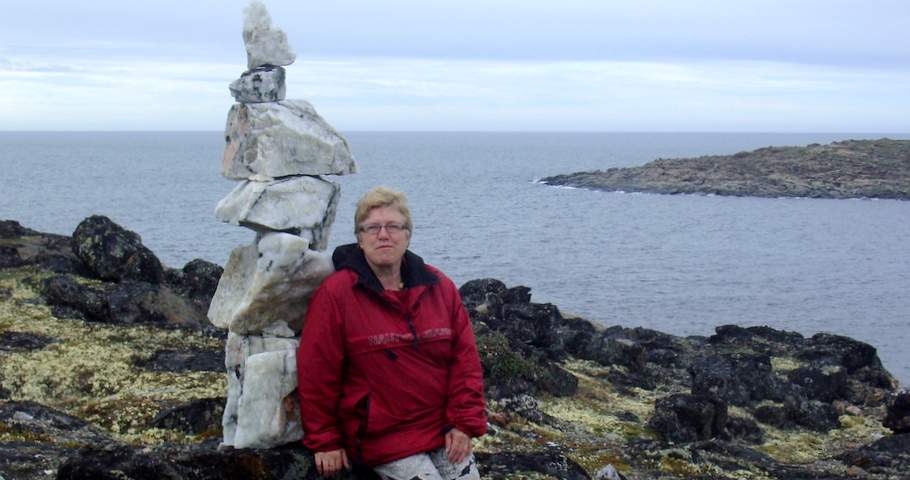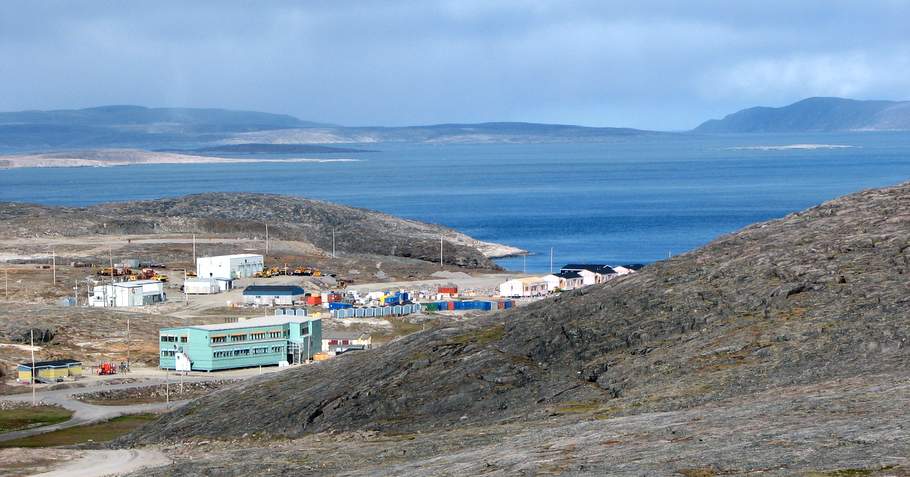Seeing my project No Child Should Have to Take the Long Way Home through the eyes of people who have little or no knowledge of Inuit issues makes me look at the instances who have the power to bring about change in the living conditions of children and mothers.
I'm in the project now and have started to meet new people. Starting this second phase in Prince Rupert let me assess what I needed to do to get the positive response to further the project. This town is a nice mixture of native and non-native Canadians. Tonight, I'm thinking that if everyone in Canada gave one twony, each collectivity needing a safe house could start its own (safe house/respite home) so that the children would not have to be moved around but could stay in their own communities.
My desire is to help change the course of children's lives and help mothers help themselves. Since I worked with the Inuit, I have wanted to offer the children, an environment, an accommodation so that fewer of them will find themselves away from their family and /or community. By law, the DYP must intervene, but what if the safe house/respite home was part of the solution.
A profound impact on my life
A few years ago, I traveled to Nunavik to work as a youth protection agent. It was an event that had a profound impact on my life. When I worked for them in 2009-2010, I was confronted with a structure that had too much red tape bringing with it many walls for the Inuit women; so much oversight that women did not often get the full benefits of justice; too many high end players with their own agendas and too well-written scripts emphasising the importance of child protection to the exclusion of understanding the family context.Presently, No Child Should Have to Take the Long Way Home is a project that includes an 8000-kilometer trek to raise awareness about the realities of the North and to raise funds for a safehouse/respite home for children in Nunavik so that they can stay in their communities.
No Child Should Have to Take the Long Way Home is a grassroots initiative to help children in need of loving care, of a protective and stable environment to meet their basic needs in a safe house in their own community. Children, mothers, and communities are the object of this project No Child Should Have to Take the Long Way Home.
My goal in walking 8000 kilometers is to raise awareness on the Nunavik reality when it comes to the protection of their children and also to inform the Canadian population of the the plight of the Inuit mothers. During my two to three-year walk project, I will raise funds to offer the people of Salluit, Nunavik, Quebec, a safe house for their children. Presently, they often have to leave their community when they become the wards of protection services. The safe house would allow them to stay in their community rather than being sent in other communities where they have no access to their extended families for months, sometimes years.
My trek started from Prince Rupert, BC in April 2016, but it was launched in Victoria, BC with friends who came from Courtenay to see me off after a huge hot dog meal, My final destination is the county of Victoria in NS. I plan to walk 20-25 kilometers a day and I plan to deliver conferences on the Inuit and their reality. This trek project will be done over a period to offer lectures and conferences to all Canadians.
Although the plan is to raise funds for a safe house in Nunavik, this is a project that wants to represent all Indigenous children across Canada. If the safe house/respite home proves to be successful, it could be duplicated anywhere in Canada.
Although the plan is to raise funds for a safe house in Nunavik, this is a project that wants to represent all Indigenous children across Canada. If the safe house/respite home proves to be successful, it could be duplicated anywhere in Canada.
Elders are perceived as role models
When I first met the Inuit, I was able to communicate with them almost immediately even if I did not speak Inuktitut. They came to me easily, maybe because they considered me an elder. In the Inuit culture, being an elder counts.
“Elders” are considered culture-bearers. They carry knowledge. Respect is not only a matter of one’s chronological age: elders are perceived as role models who serve as advisors, philosophers, and professors.
I learned to respect their ways and to understand that they knew what their problems were. I met with their Justice committee and found that they were really trying to help their community.
Quinuituq (deep patience) is a value the Inuit have developed and it is an indicator of their resilience.
“Elders” are considered culture-bearers. They carry knowledge. Respect is not only a matter of one’s chronological age: elders are perceived as role models who serve as advisors, philosophers, and professors.
I learned to respect their ways and to understand that they knew what their problems were. I met with their Justice committee and found that they were really trying to help their community.
Quinuituq (deep patience) is a value the Inuit have developed and it is an indicator of their resilience.
A lifetime of observations
Due to health reasons, I wasn't there as long as I thought I would be and it was a hard decision not to go back when I felt better. As I was later writing a yet unpublished book about my experience, it seemed like I had packed a lifetime of observations. When I finished writing this very serious, unpublishable book about the reasons for the overrepresentation of children under protection and the impossible mandate of protecting their children in view of the overpopulation in their homes, I decided to write a children's book, one from the viewpoint of a child of the community asking questions about what was happening to some of her friends and school mates. It was a direct comment on the challenges met by mothers to ensure the safety of their children when facing the policies and practices that permeate the child protection system of one of our country's provinces.
Overcrowding has an incidence on the issues of safety and protection
The girl in my book asks a lot of questions about what is happening to her community. For example, how come, when her little friend is abused, she has to go to court and the charge is rejected. From what Luisa understands, her friend is not smart (a psychological evaluation) enough to be trusted to say the truth. My book heroine cannot understand this logic provided by the defense lawyer. This 12-year old has a privileged knowledge of her community, but it is mostly questions concerning her friends that bother her. What she does know is that everyone lives one on top of the other in small spaces and things do happen. Overcrowding has an incidence on the issues of safety and protection.
My project is about the problems she points to. Hopefully, Luisa’s generation will have taken the situation into their own hands so that their children will have another destiny.
My personal experience in Nunavik
I expect all my blog readers including my French and Francophile readers to be as curious as I am about the Inuit and their culture. Please share this interest with as many people as you can.
Earlier on in the year, as I was speaking to a friend about my project, I was asked why I deemed it so important to do this project. My answer was that I felt that I had not accomplished what I wanted when I was there, I have a task, unfinished, with and for the Inuit. At this point, I cannot predict my results but I am acting in such a way that things happen to give my project its own life.
Inuit elders and community leaders will guide me
My perception is that I will need to meet with as many Inuit elders as possible to guide me in this work. Inuit elders know their people; I have basic knowledge of the Inuit. It will help me to participate in all kinds of activities that are organized by various Inuit organizations and community groups, such as forums and happenings that concern them. It would be helpful to learn the language to understand their way of thinking better. Although I have Inuit friends and some knowledge of their reality, my project is for the children and to reinforce family unity.
Inuit women have skills that should help them
The other aspect that speaks to me is to help women help themselves for the good of all communities. Each of them wants to give a good life to their children but they must be able to develop and educate themselves according to the rules of our society.The social problems they face are numerous, but Inuit women have skills that should help them. As part of the design for this project, we must enhance and use their traditional knowledge for education and for building their children's identity.
Petition to empower the mothers and to reduce placements of the children
Like all that matters, we have to make the connections with what we can all do to help. This petition which I carry is to be given to PM Justin Trudeau hopes to restore dignity but also their rights to improve stable families and harmonious communities. Policies and practices which reflect longstanding and deeply embedded mother-blaming culture and father invisibility ideologies in child protection systems must be changed.








The undertaking of this project is not for the faint of heart. You are so courageous and generous, Lorraine An all-around amazing woman!
ReplyDeleteMay your project succeed. You will have thousands of people supporting you!
You have to have been there to know why I am doing this. It is also a ral gift that I am capable at my age to do this. The people I get to meet are extraordinary and I get that if all Canadians contributed 2$, there would be enough money to build these safe houses I am talking about. Thanks for the encouragement. It helps!
Delete